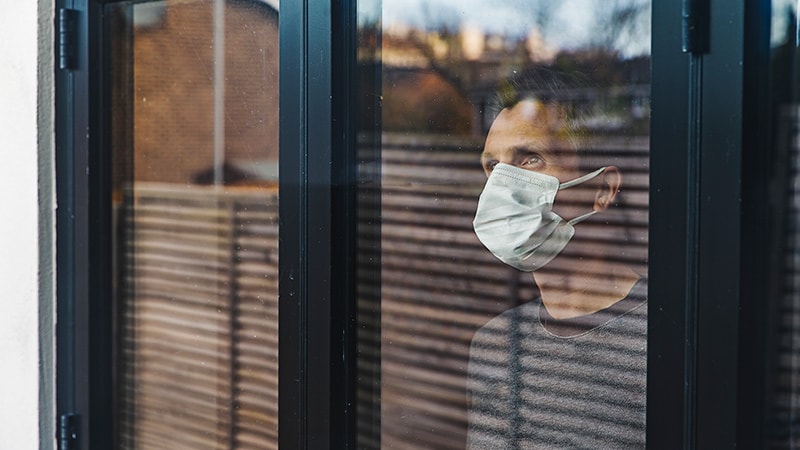The study covered in this summary was published on medRxiv.org as a preprint and has not yet been peer reviewed.
Key Takeaways
-
In the months after infection with COVID-19 (post-COVID condition), adults who previously self-isolated at home with COVID-19 exhibited decreased cerebral blood flow (CBF) in the thalamus, orbitofrontal cortex, and regions of the basal ganglia when compared with patients with flu-like symptoms without COVID-19 diagnosis.
-
Among patients with COVID-19 who self-isolated, patients with self-reported ongoing fatigue had CBF differences in the occipital and parietal regions when compared with patients without self-reported ongoing fatigue.
Why This Matters
-
The long-term consequences of COVID-19 on brain physiology and function are still being characterized and are needed to relieve pressure on strained healthcare systems worldwide.
-
The study suggested cerebral blood flow evaluation may signify long-term changes in brain physiology in adults across the post-COVID timeframe.
-
Cerebral blood flow studies may contribute to characterize the heterogenous symptoms of the post-COVID condition.
Study Design
-
This observational cohort study included a total of 50 patients who were recruited from the Sunnybrook Health Sciences Center between May 2020 and September 2021. Patients were between age 20-75 years with evidence of positive or negative COVID-19 diagnosis.
-
Excluded patients from the study had a previous diagnosis of dementia, an existing neurologic disorder, previous traumatic brain injury, severe psychiatric illness, or ongoing unstable cardiovascular disease.
-
Among the patients, the post-COVID group consisted of 39 participants that previously self-isolated at home because of COVID-19 and were an average of 116.5 days ± 62.2 days since positive diagnosis before undergoing arterial spin labeling (ASL) MRI. They were compared with a control group of 11 patients with flu-like symptoms but with negative COVID-19 diagnosis.
-
Participants underwent ASL MRI and voxel-wise analysis of CBF to assess for between-group differences.
Key Results
-
The post-COVID group exhibited decreased CBF in the thalamus, orbitofrontal cortex, and regions of the basal ganglia, including the caudate, nucleus accumbens, putamen, and pallidum. No regions of the brain had increased CBF in patients in post-COVID condition.
-
Within the post-COVID group, 11 patients with self-reported ongoing fatigue had CBF differences in the superior occipital and parietal regions (superior lateral occipital cortex, angular gyrus, superior parietal lobule, and supramarginal gyrus) and inferior occipital regions (lingual gyrus, occipital fusiform gyrus, intracalcarine cortex, and precuneous cortex) compared with 28 patients without self-reported ongoing fatigue.
Limitations
-
Participants were recruited over the course of several pandemic waves in Ontario, Canada and were likely infected with different strains of SARS-CoV-2, including the Alpha and Delta variants. However, the Omicron variant was not studied.
-
Data used in the study are cross-sectional and lack pre-infection assessment.
-
The sample sizes of the two groups were few and power analysis was not performed.
-
The control group depended on self-reported flu-like symptoms that were of unknown origin.
-
Comparison within the post-COVID-19 group for fatigue-related exploratory analysis depended on self-reported symptoms.
-
The ASL MRI images were acquired at a spatial resolution that was comparable to the average thickness of the cortex and may be susceptible to partial volume error, but partial volume correction was done as a processing step in sensitivity analysis.
Disclosures
-
The study was partly funded by the Sunnybrook Foundation and the Dr Sandra Black Center for Brain Resilience and Recovery.
-
Among the authors, Sandra E. Black, MD, reports payments to her institution from GE Healthcare, Eli Lilly and Company, Biogen, Genentech, Optina Diagnostics, and Roche, in addition to consulting fees from Roche and Biogen.
This is a summary of a preprint research study, “Decreased cerebral blood flow in non-hospitalized adults who self-isolated due to COVID-19,” written by researchers at the University of Toronto, Department of Medical Biophysics, and the Hurvitz Brain Sciences Program, Sunnybrook Research Institute, Toronto, Canada, on medRxiv, provided to you by Medscape. This study has not yet been peer reviewed. The full text of the study can be found on medRxiv.org.
For more news, follow Medscape on Facebook, Twitter, Instagram, YouTube, and LinkedIn
Source: Read Full Article
